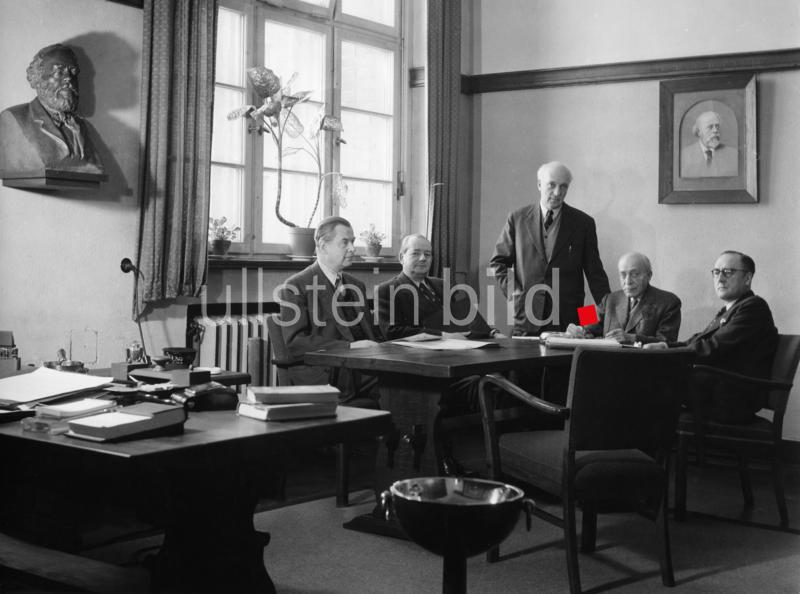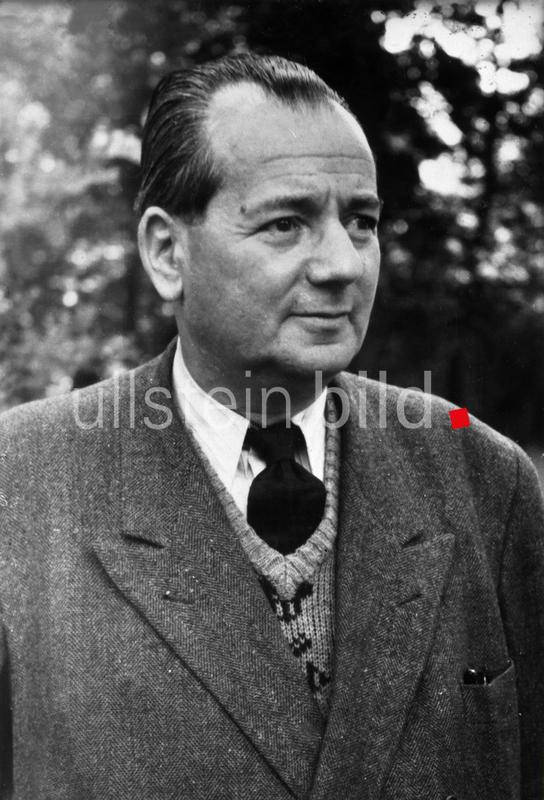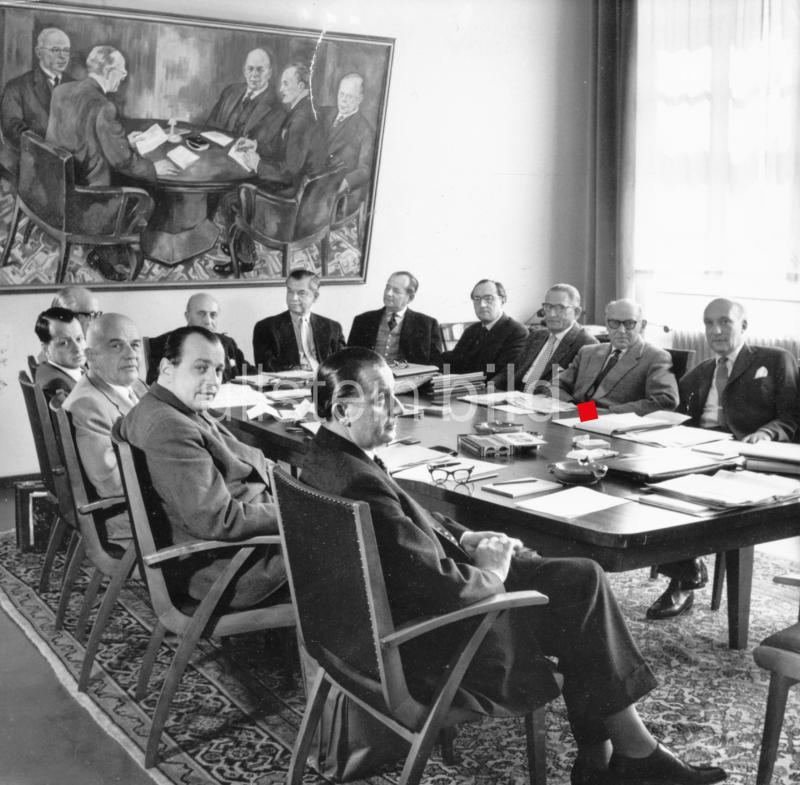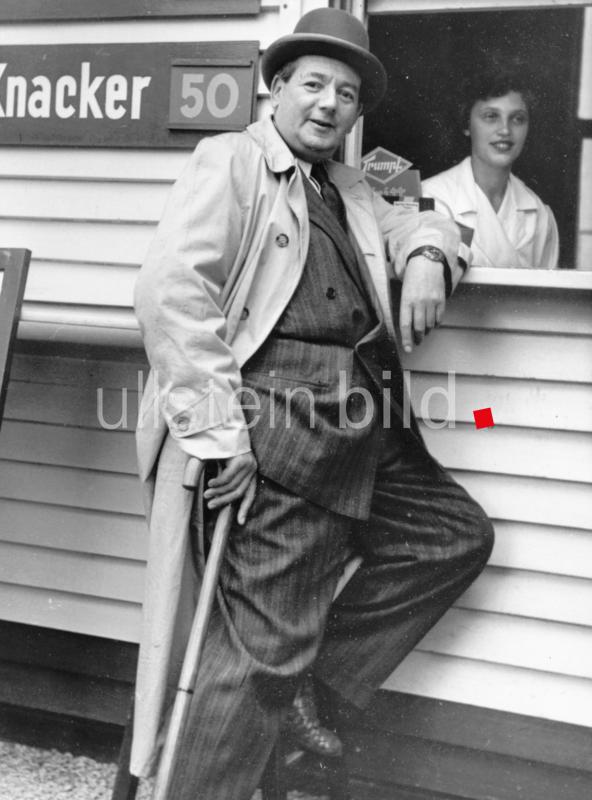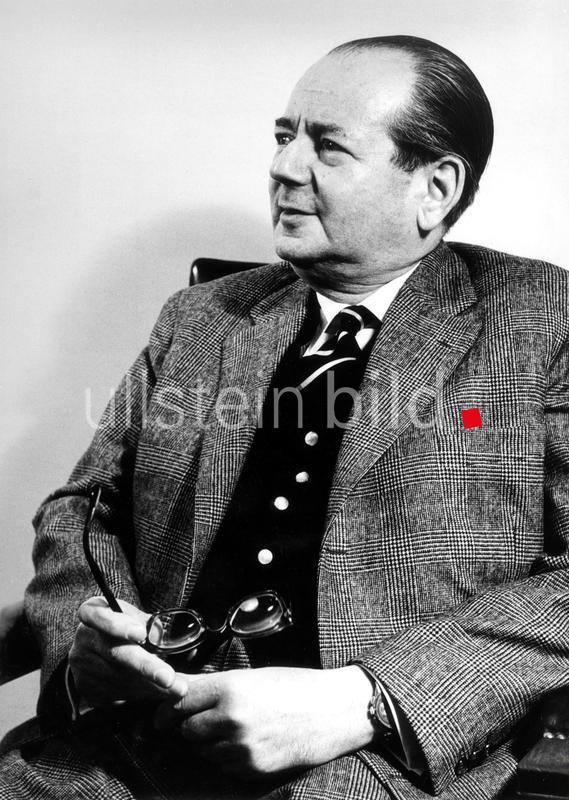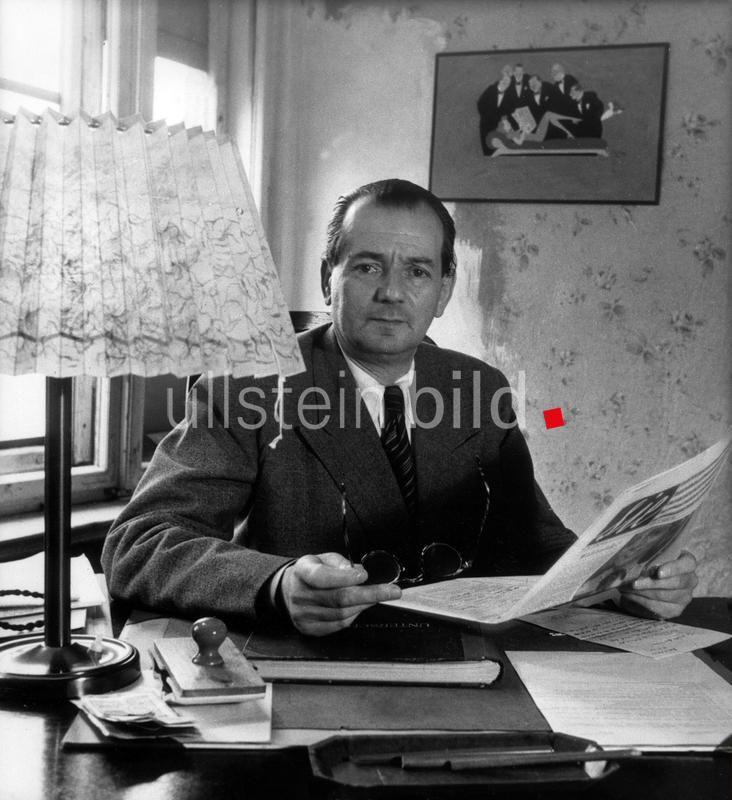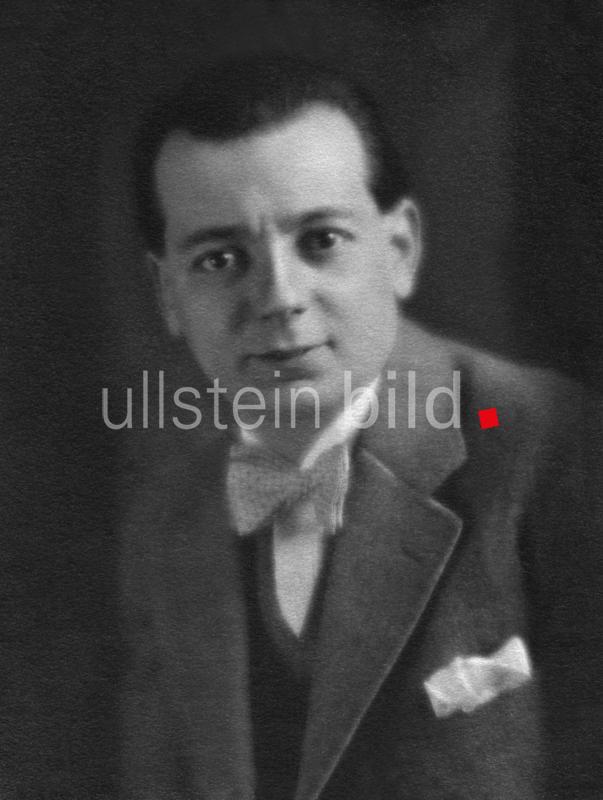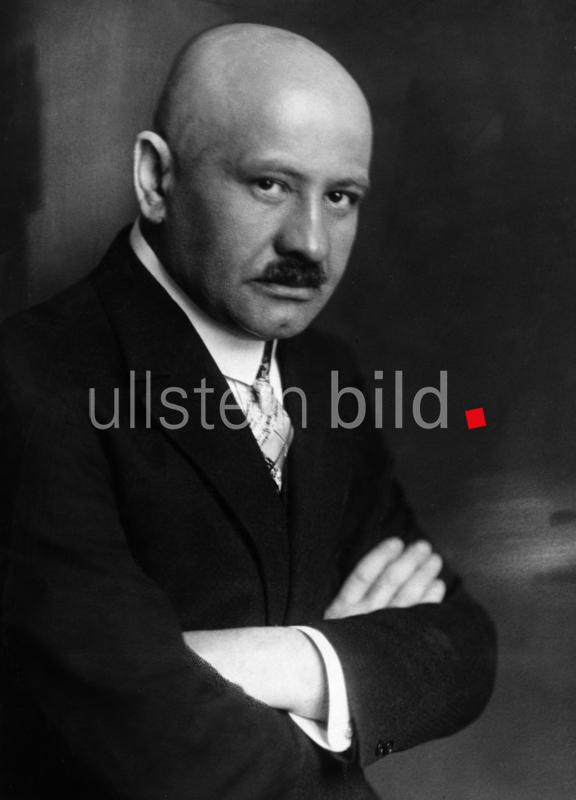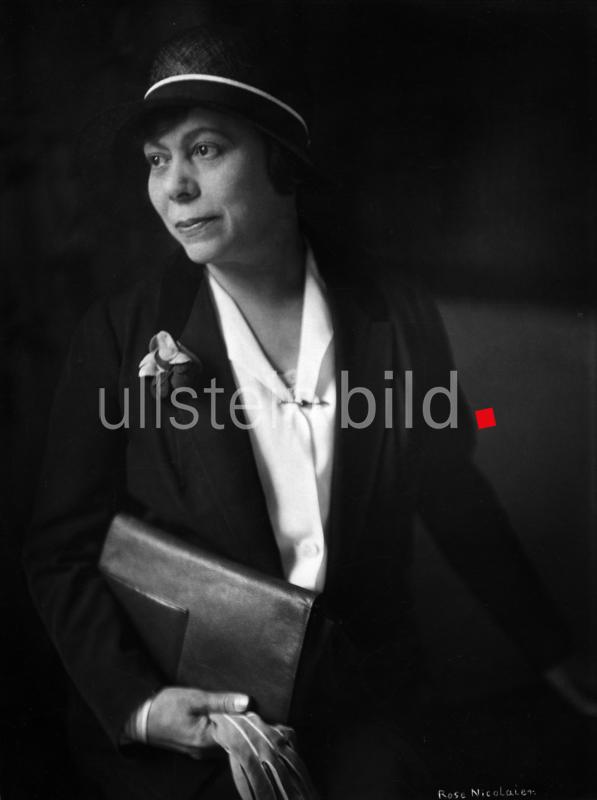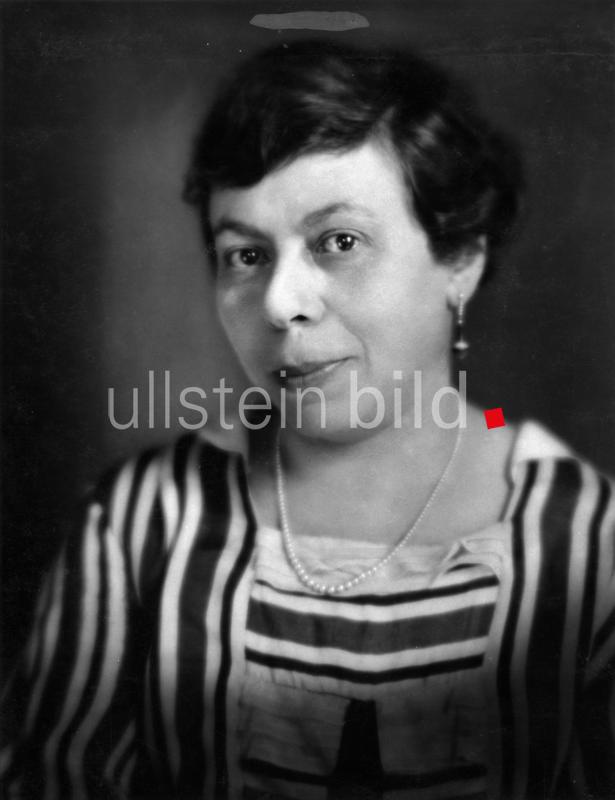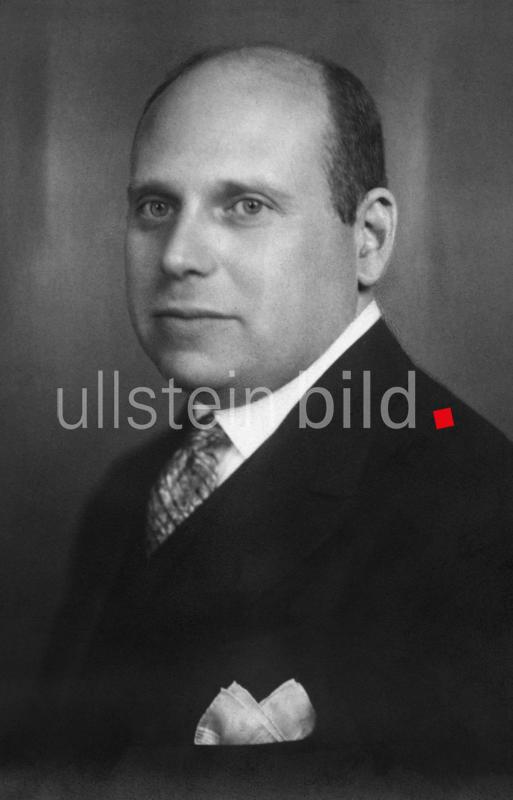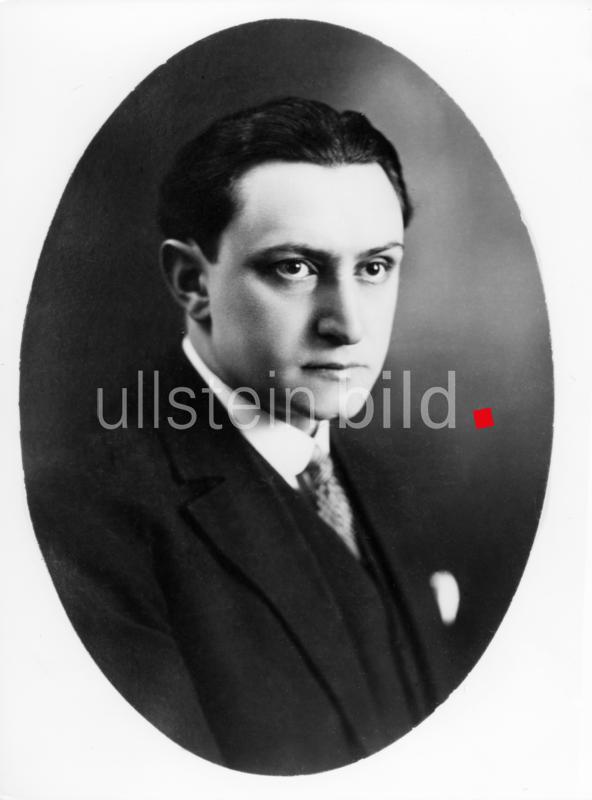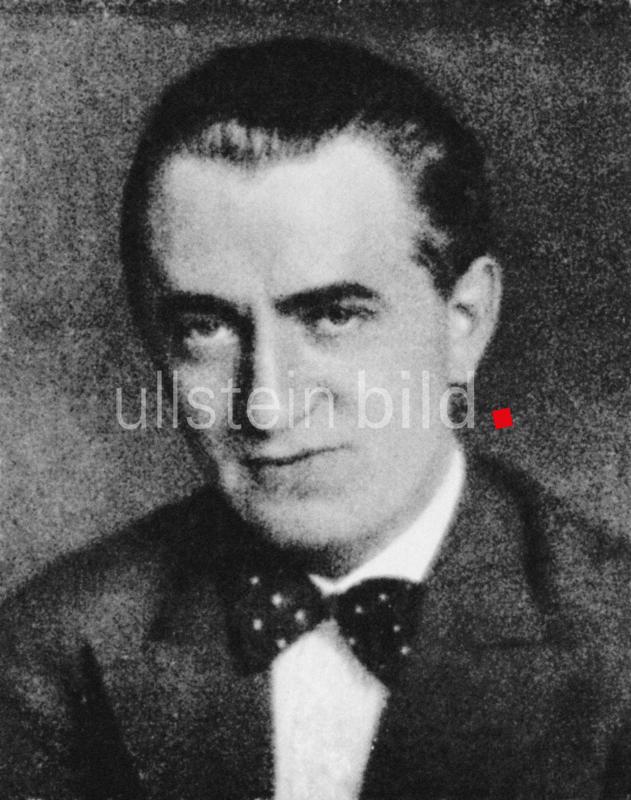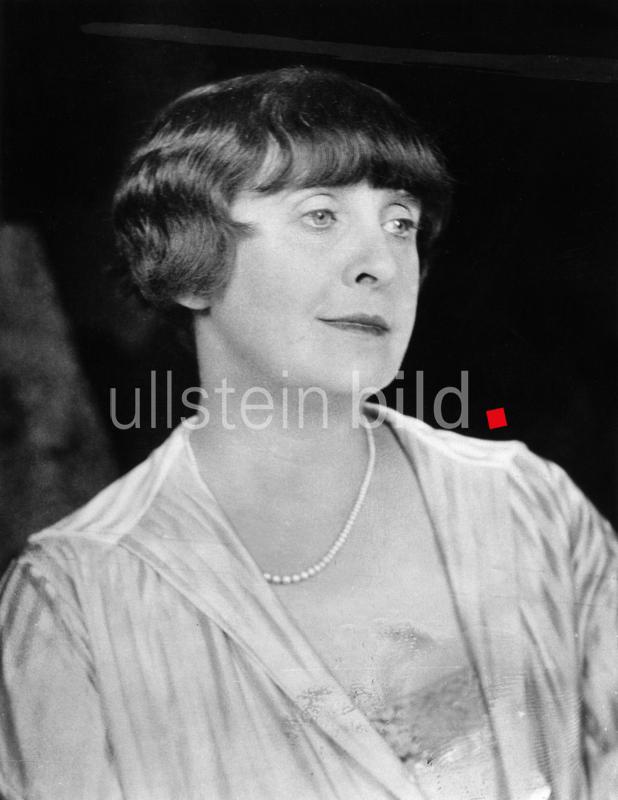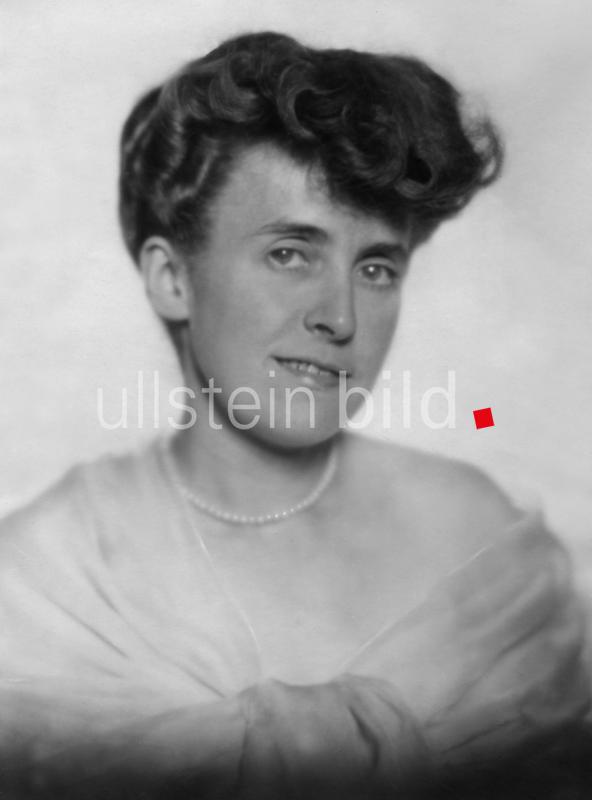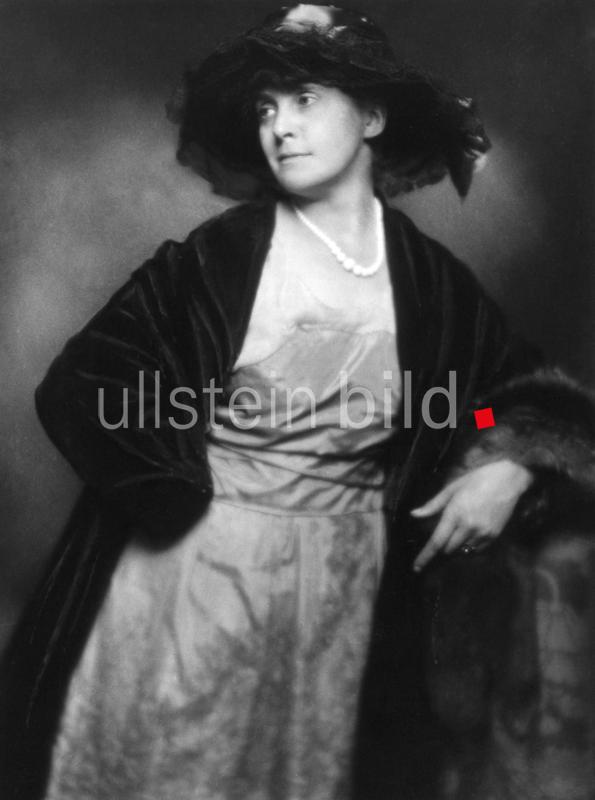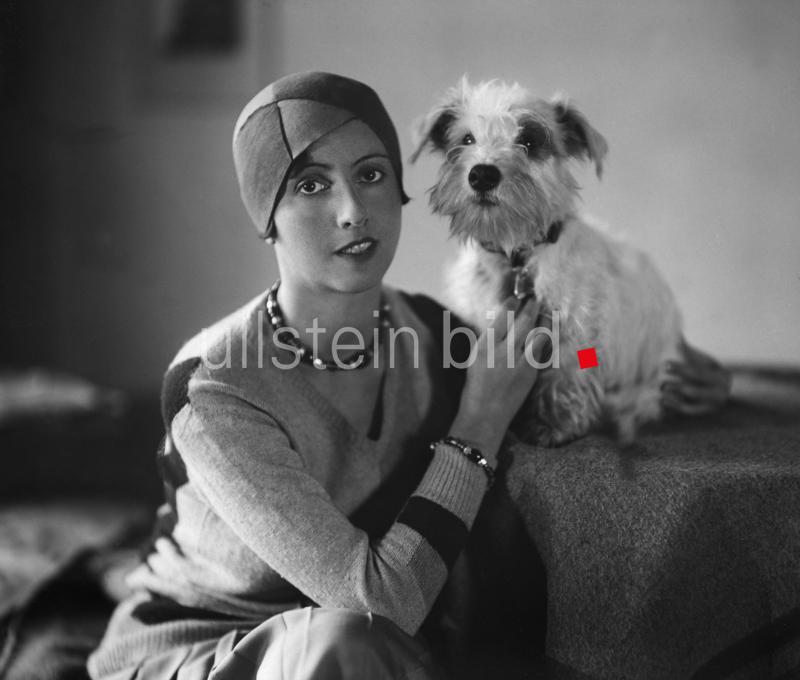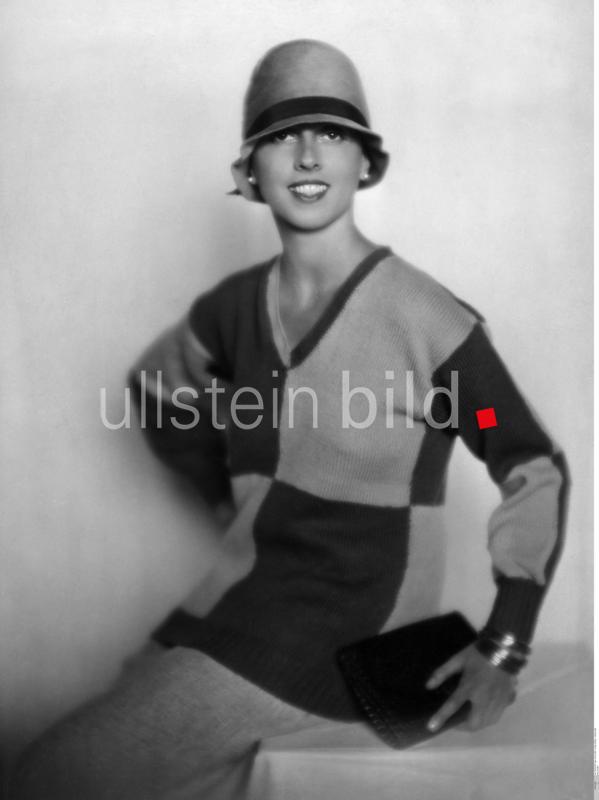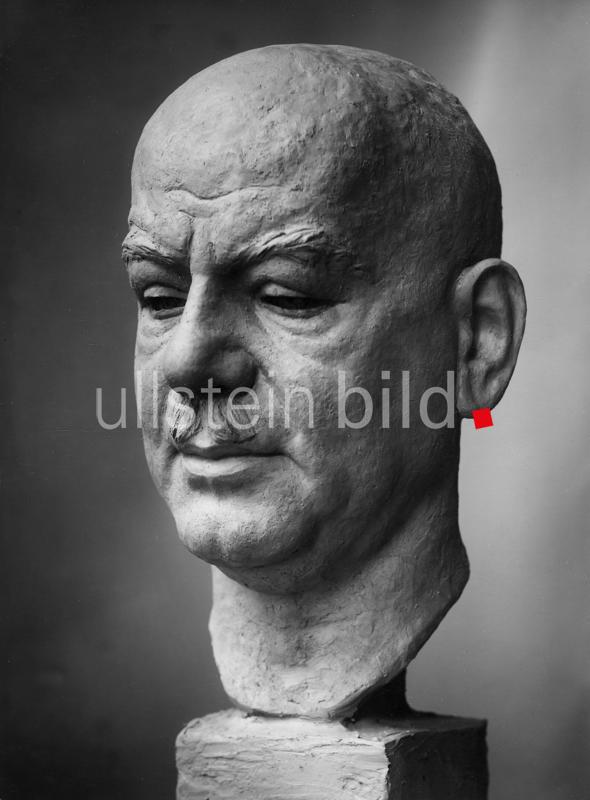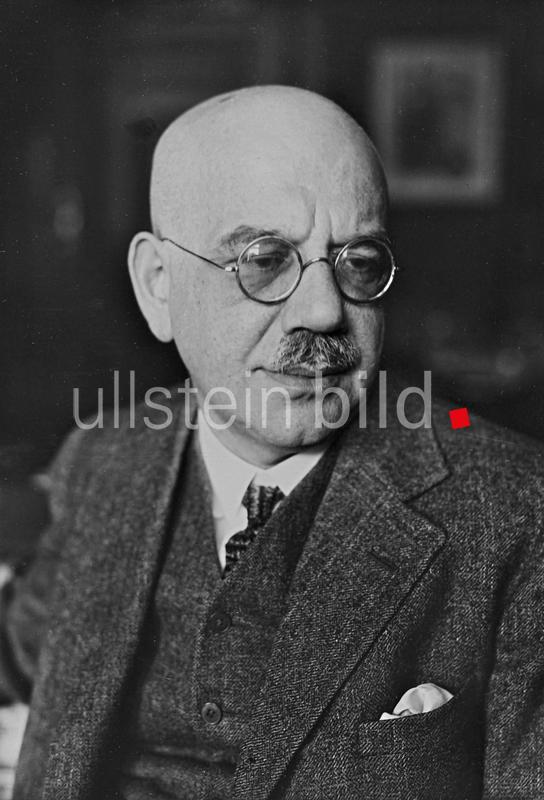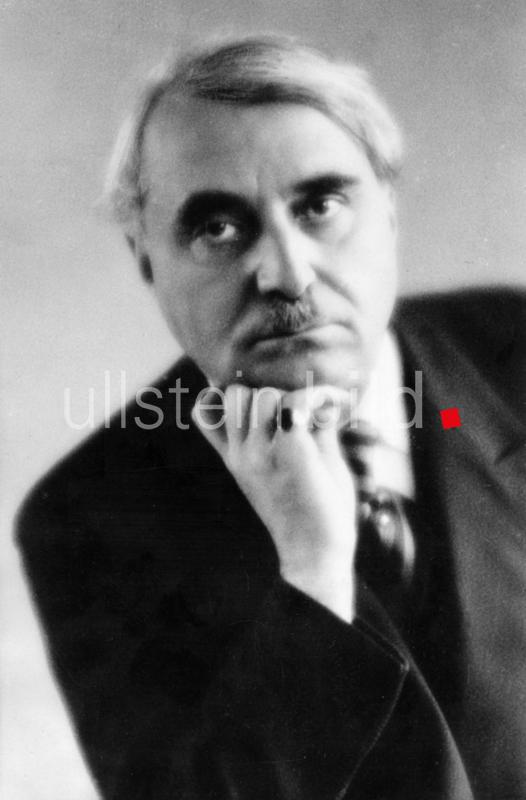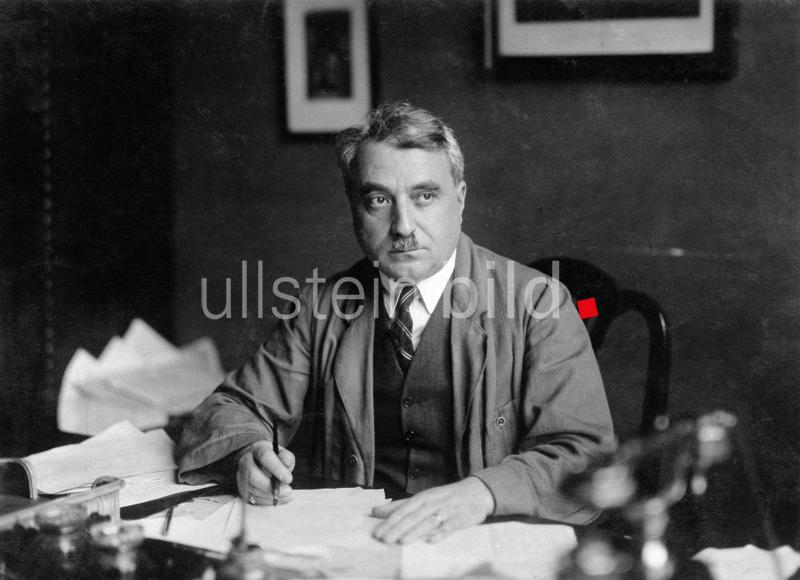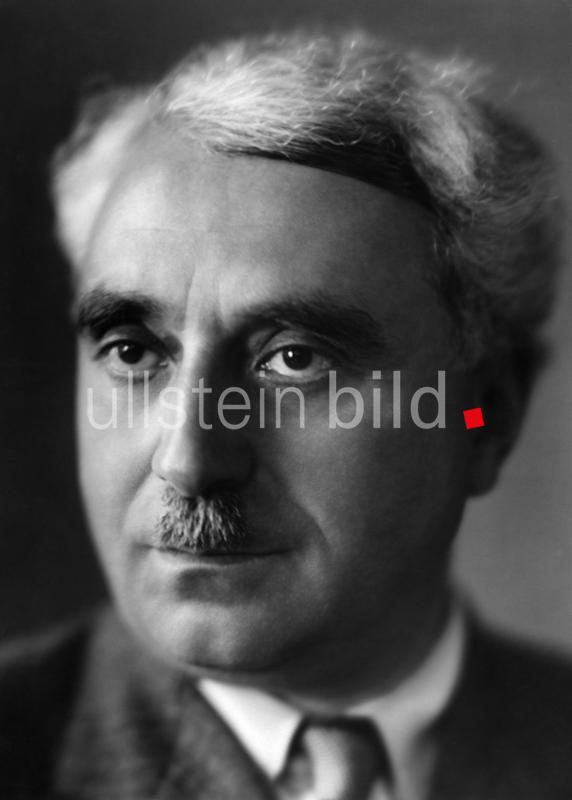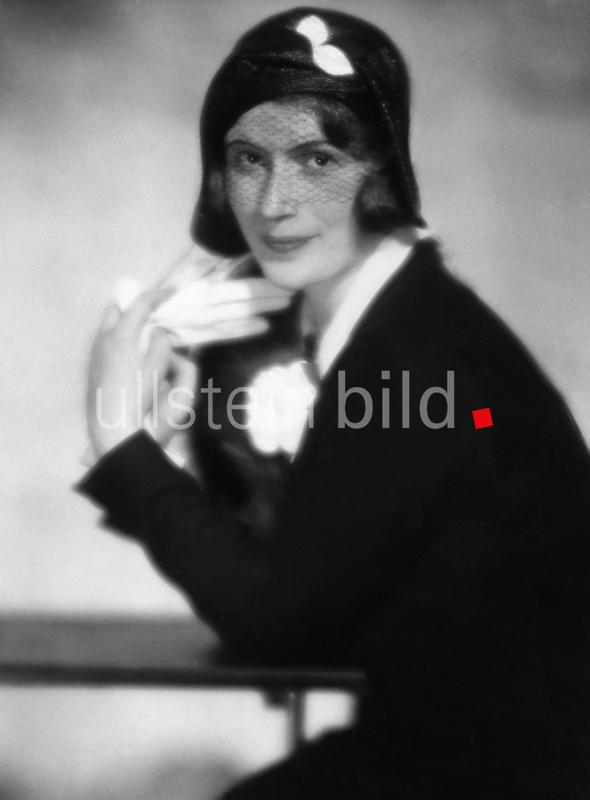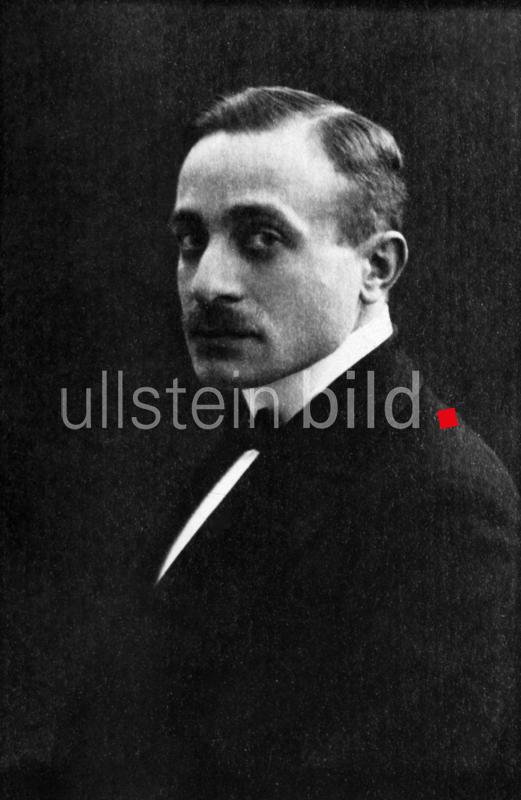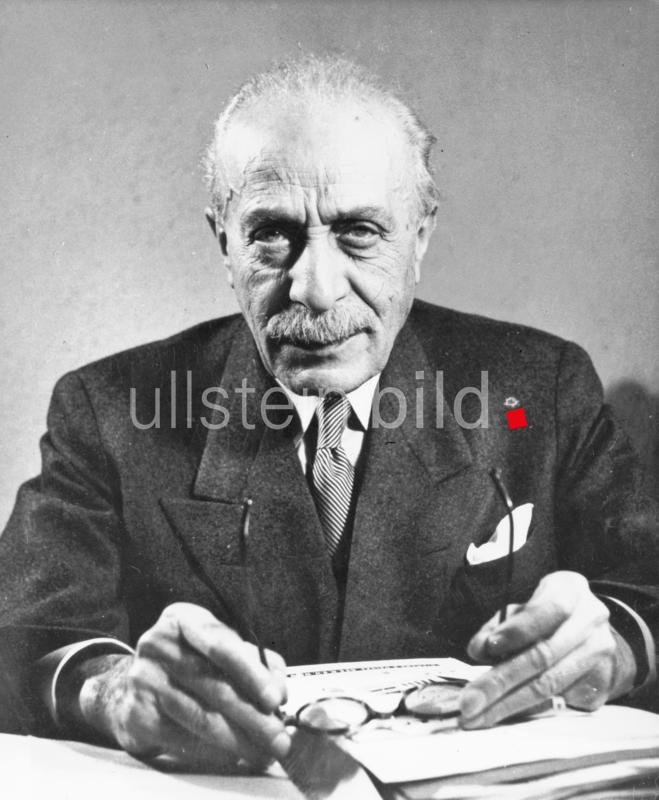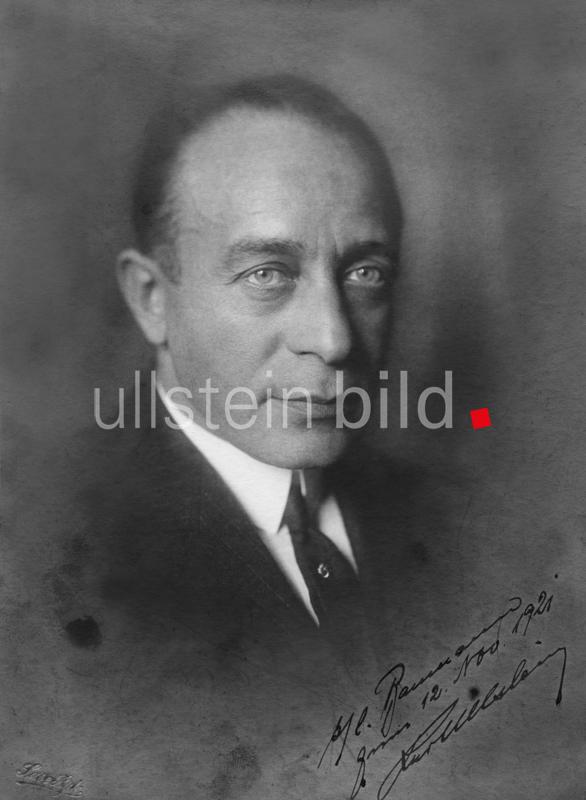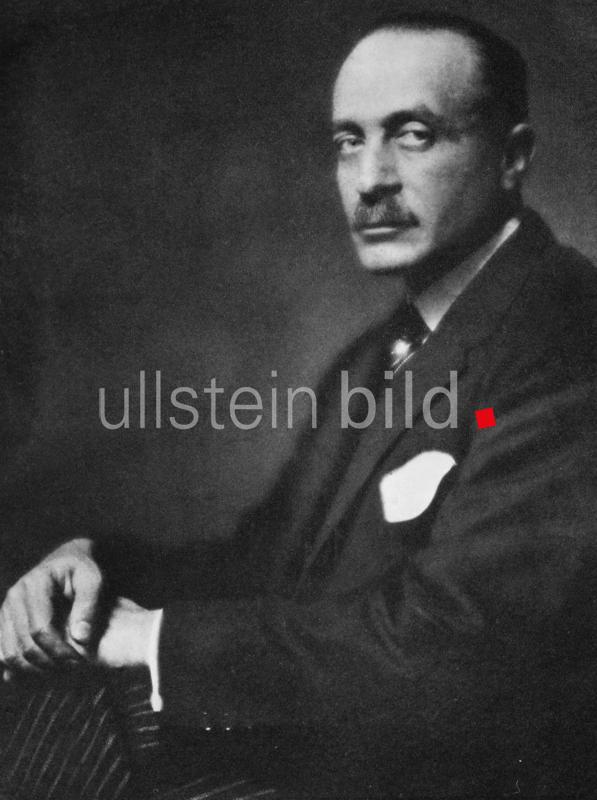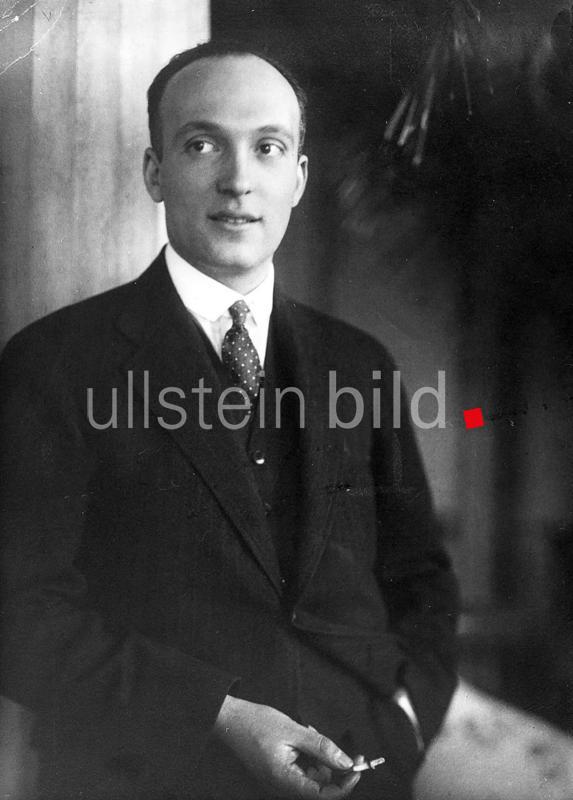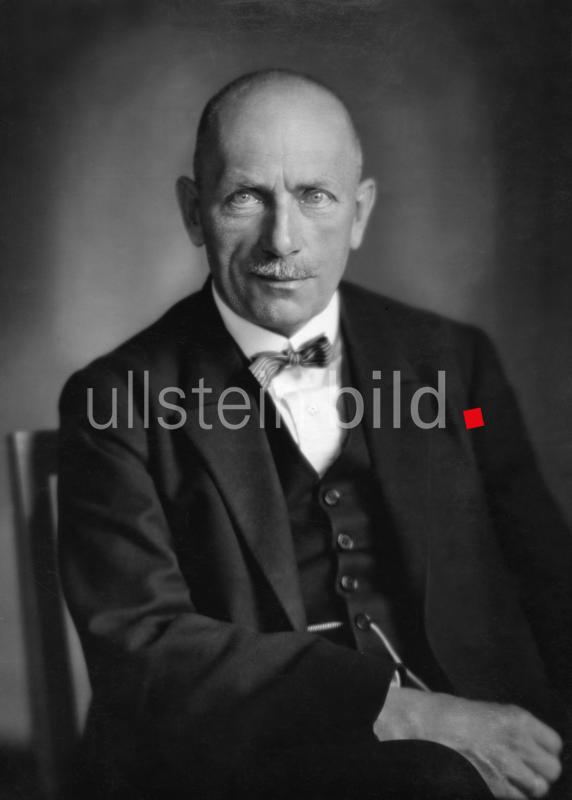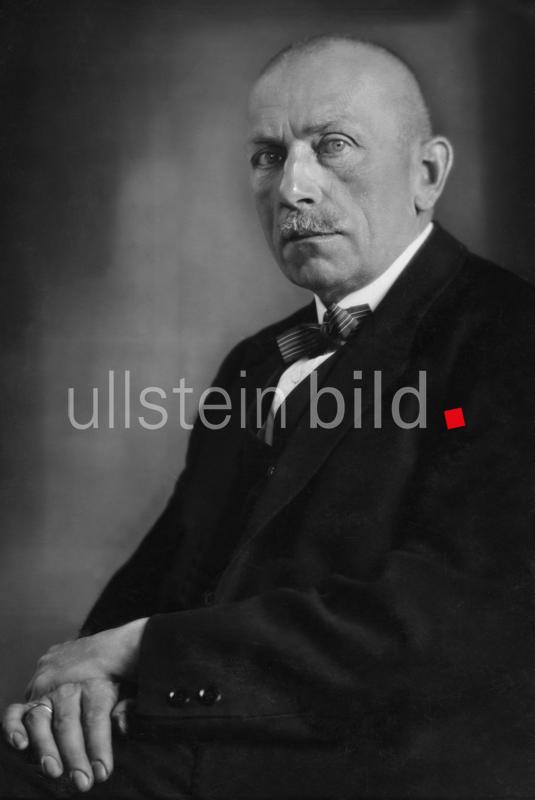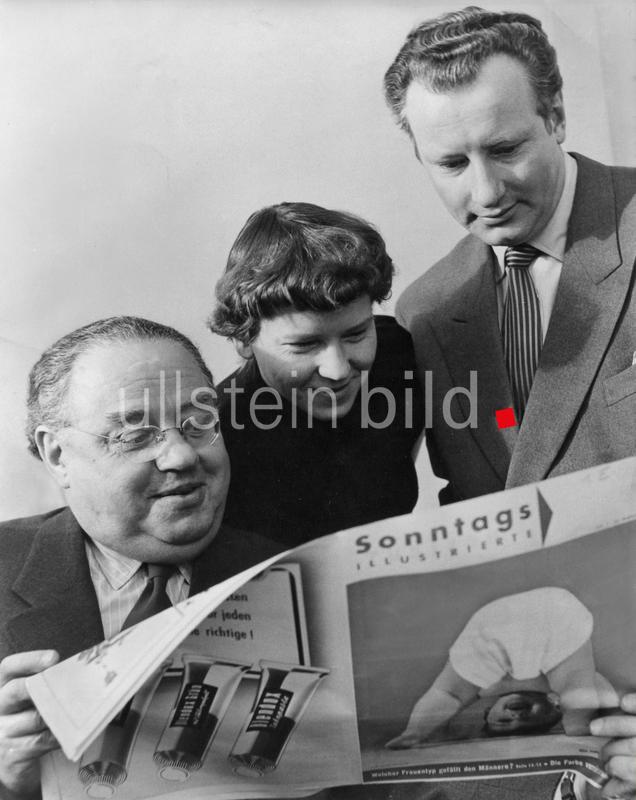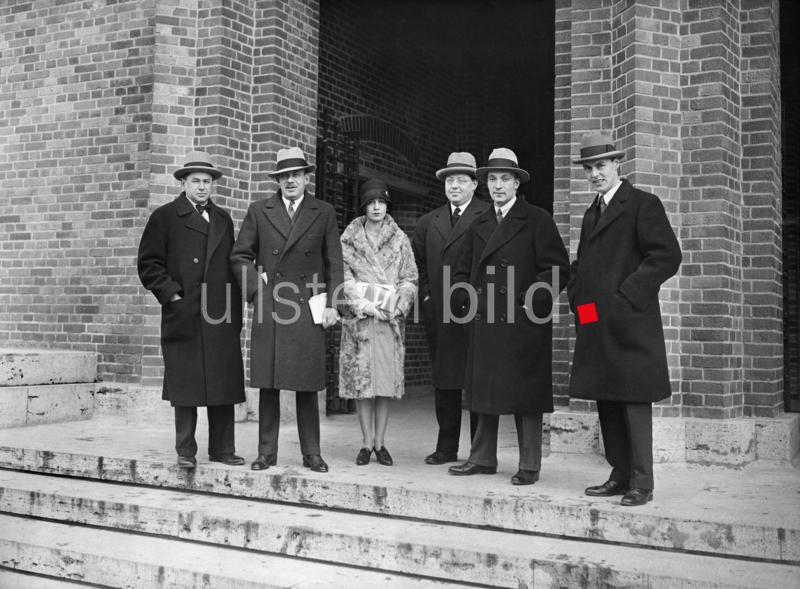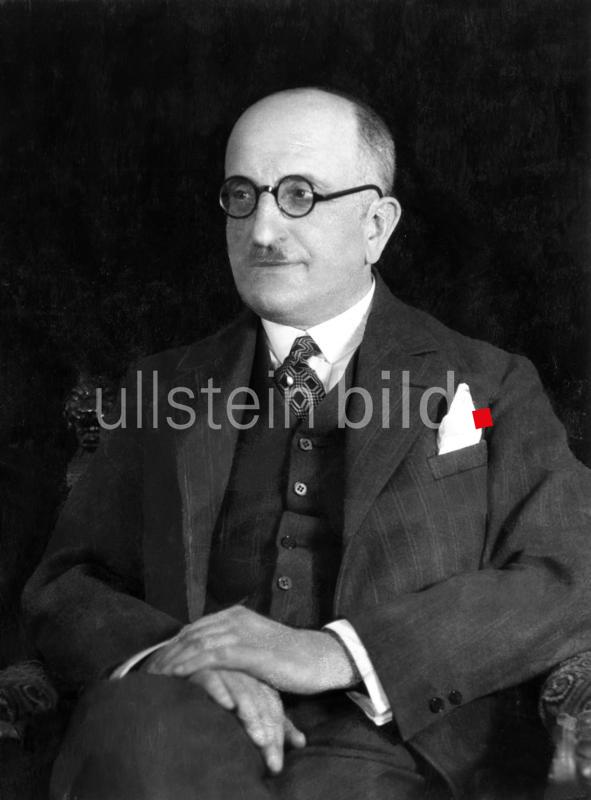Free press
...and an Ullstein photo from 1928 (part 2/2)

Photo: ullstein bild
The photograph with the media number 06485243 shows the Verein deutscher Zeitungsverleger, conference in Berlin, participants at a breakfast in the hall of the Ullstein printing house in Tempelhof, published Berliner Morgenpost, 05.10.1928, photo: A. u. E. Frankl
______________________________________________________
PART TWO of the interview with Phoebe Kornfeld: The free press – and an Ullstein photo from 1928
(Read part 1/2 here)
______________________________________________________
Publicists in the Ullstein Photo of 1928 with a high degree of certainty:
Jacques Fränkel (Vienna, 1871 – Prague prison, 1945)
Jacques Fränkel is seated at the middle table half facing the photographer to the right of the only woman on that side of the table.
His photo is in the album gifted to Kurt Safranski by colleagues when he left Ullstein in 1934, date and photographer unknown.
I had previously not been able to decipher the signature beneath the portrait photo beyond the first name, Jacques, and the first letter of the last name. While researching the 1928 photo, however, I found a brief reference to the Ullstein journalist Jacques Fränkel as one of forty-five Ullstein employees persecuted during the Nazi era.
Subsequently, I found a reference to his 1945 death in Aufbau, the German language newspaper published in New York City by and for those exiled from Nazi Germany. Beginning with the information there, I have pieced together a little more about Jacques Fränkel’s life.
Born in Vienna, Fränkel attended the Akademisches Gymnasium and then enrolled at the University in Vienna in 1889, where he studied a range of subjects, including music with Anton Bruckner. Among his friends were Arnold Schönberg and Karl Kraus, with whom he worked on the initial editions of Die Fackel. His career as a journalist included working as a political editor at the Frankfurter Zeitung and later at Ullstein’s Vossische Zeitung, where he wrote as Jacob Frank. At the same time, however, as Ludwig Reve, he was a theater and book critic, including for Ullsteins B.Z. am Mittag, and the author of pieces in Ullstein’s popular magazine Uhu that was first published in the Weimar era with Kurt Safranski as its editor using the name of Peter Pfeffer.
I have not been able to learn more about Jacques Fränkel’s personal life or the circumstances of his exile or death. He had four siblings, but I have not been able to trace anything about them.
See: Chapter II, 2, 79-80, by Christoph Hamann in Die Eule läßt Federn. Das Ullsteinhaus 1926-1986. Setzer, Drucker, Journalisten, eds. Egon Bannehr et al. Berlin: trafo Literaturverlag, 2nd ed. 2012; Aufbau, November 9, 1945; and https://viewer.schoenberg.at/mirador.php?&id=18900_hl.
Text: Phoebe Kornfeld, 03/2025.
Gustav Fuchs (Heilbronn, June 27, 1857 – Danzig, March 9, 1929)
He is standing at the left end of the tables, between the second and third tables from the front in the 1928 photo.
Photo: Der Zeitungs-Verlag May 5, 1928 and June 24, 1927 (https://anno.onb.ac.at/cgi-content/anno?aid=zev&datum=19280505&seite=31&zoom=33 and https://anno.onb.ac.at/cgi-content/anno?aid=zev&datum=19270624&seite=7&zoom=33 ).
Gustav Fuchs was a member of the board of the Association of German Newspaper Publishers, thus the appearance of his photo along with other board members in Der Zeitungs-Verlag in May 1928 and another at the center of an article to mark his seventieth birthday in June of the previous year. The Wikipedia entry for Fuchs explains that he published the Danziger Neueste Nachrichten and co-owned other papers in Stettin and Stuttgart. He died in the spring of 1929 less than six months after the Ullstein-hosted breakfast. See: https://de.wikipedia.org/wiki/Gustav_Fuchs_(Verleger).
Interestingly, in the 1928 photo, Gustav Fuchs stands beaming and with his arm around a younger man, who is presumably his son Hans Fuchs, for whom I have not found a photo. Following his father’s death, Hans Fuchs stepped into his father’s shoes and continued to run the business until it was expropriated by the Nazi regime. See: https://de.wikipedia.org/wiki/Hans_Fuchs_(Verleger).
Text: Phoebe Kornfeld, 03/2025.
Arthur Hess (October 16, 1872, Amsterdam – May 9, 1942, Łódź/Litzmannstadt)
Arthur Hess spoke at the breakfast according to the October 5, 1928, article in the Berliner Morgenpost. It is possible that he is in the photo standing against the side wall to the left of the third table from the front, holding a white object in his hands.
Arthur Hess, who was born in Amsterdam, was a professional Prokurist, trained to represent companies in legal matters, according to the 1901 marriage certificate recorded when he married Mathilde Gertrud Engelmann, whose mother was a granddaughter of the Ullstein founder Leopold Ullstein. Like many at Ullstein, once hired, he multi-tasked, holding various increasingly important responsibilities over time and becoming a director of the company. Let go from Ullstein in 1933, Hess and his wife suffered the many humiliations exercised by the Nazi regime on Jews who did not manage to escape the country. They then underwent the ultimate hardship of being transported in October 1941 to the unlivable conditions of the Łódź ghetto where they both lost their lives in the spring of 1942. Their son had made it to England, and their eldest daughter to the US, but I have not been able to learn the fate of their youngest daughter.
See: https://www.stolpersteine-berlin.de/en/reichsstr/106/arthur-hess.
Text: Phoebe Kornfeld, 03/2025.
Kurt Safranski (née Szafranski) (October 17, 1890 – Kingston, NY, March 1, 1964)
Kurt Safranski is standing against the wall holding a newspaper at the far righthand corner of the 1928 photo.
A gifted graphic artist who trained with Lucian Bernhard, Kurt Safranski worked initially as an illustrator, best known for his collaboration in 1912 with his friend Kurt Tucholsky on Rheinsberg. Ein Bilderbuch für Verliebte (Rheinsberg. A Picture Book for Lovers). He began at Ullstein as illustrator and artistic director and rose ultimately to the position of executive director of the company’s magazine division. He was instrumental in the launch of at least two Ullstein magazines — Der heitere Fridolin and Uhu — and worked closely with Kurt Korff on Ullstein’s groundbreaking illustrated magazine Die Berliner Illustrirte Zeitung. It is notable that among the few photos Safranski retained of himself in the Ullstein offices are shots of him with Ullstein’s leading artistic advisor, Carl Schnebel, a widely respected graphic artist (See Photos from the Safranski Archive of Safranski's heirs: Safranski in his Ullstein office and Safranski with Carl Schnebel, in both cases, date and photographer unknown).
As soon as Hitler was appointed Chancellor, Safranski knew that as a Jew he would have to leave Germany to protect himself and his family. Let go from Ullstein in 1934, he was quickly hired by the head of the Hearst magazine division for a position in Manhattan. In 1935, Safranski founded with partners Ernest Mayer and Kurt Kornfeld the Black Star photo agency. Their combined talents, expertise and worldwide publishing networks contributed to a revolution US photojournalism as they placed the photos and photo stories of almost four hundred gifted photographers in US magazines such as Life, Look, National Geographic, the Saturday Evening Post, Parade, and in other magazines in the US and internationally.
In 1953, the year after the restitution to the Ullstein family of the greatly diminished remains of their publishing house, Safranski advised the Ullsteins on the creation of an illustrated insert for German Sunday newspapers, a project that failed in the absence of both support from the country’s newspaper publishers and the financial wherewithal within Ullstein to underwrite the project until it could take root.
See: Phoebe Kornfeld. Passionate Publishers. The Founders of the Black Star Photo Agency. (Bloomington, IN: Archway Publishing, 2021).
Text: Phoebe Kornfeld, 03/2025.
Georg Sydow (Niederschöneweide, Berlin, August 16, 1877 – June 28, 1934)
Georg Sydow is standing just to the left of the middle column holding something in his slightly raised hand.
In 1928, Sydow was an Ullstein director responsible for labor and employment matters regarding the 8,000 Ullstein employees. He was author of a chapter called “Die Sozialpolitik des Hauses Ullstein,” (“The Human Resource Policies of the House of Ullstein) in 50 Jahre Ullstein.
Sydow earned his Ph.D. with a 1903 dissertation on the history of the French state debt post-1870. He joined Ullstein three years later on October 1, 1906, according to the records in the Axel Springer Ullstein Archive. Those records also show that he had the Prokura or signing authority for the company until the year prior to his death. His entire career was devoted to Ullstein.
Text: Phoebe Kornfeld, 03/2025.
Dr. Erwin Thyssen (Strasbourg, September 4, 1882 – ?)
Erwin Thyssen was the publisher of the Duisburger Generalanzeiger. He spoke at the breakfast to thank the Ullsteins for their hospitality according to the article in the Berliner Morgenpost on October 5, 1928. I have been unable to find a photo of him or further information about his life.
Text: Phoebe Kornfeld, 03/2025.
Karl Ullstein (Berlin, June 30, 1893 – Berlin, January 6, 1964)
Karl Ullstein spoke at the breakfast according to the article in the Berliner Morgenpost on October 5, 1928. Nonetheless, he cannot be definitively identified in the photo, even following consultation with his grandson. Many thanks to Geoffrey Layton!
Karl Ullstein, son of Hans Ullstein, thus grandson of the Ullstein founder Leopold Ullstein, trained abroad for a career at Ullstein, which he joined following his World War I service in the German army and detention as a prisoner of war in France. At the time of the 1928 photo, he was supporting his uncle Rudolf Ullstein in the management of the printing operations in the Kochstraße and Tempelhof facilities. He emigrated with his wife and children in 1941 to the United States from Switzerland via Lisbon and became a naturalized US citizen. He was involved in the postwar battle for restitution of the Ullstein properties and returned to Berlin to help run the company that was eventually returned to their hands.
See: 50 Jahre Ullstein, 137; and Juliana Berndt, Die Restitution des Ullstein-Verlags (1945-52): Remigration, Ränke, Rückgabe; Der steinige Weg einer Berliner Traditionsfirma, Berlin: De Gruyter Oldenbourg, 2020 https://doi.org/10.1515/9783110630503.
Text: Phoebe Kornfeld, 03/2025.
Rudolf Ullstein (Berlin, February 26, 1874 – Berlin, February 2, 1964)
Rudolf Ullstein spoke at the breakfast according to the article in the Berliner Morgenpost on October 5, 1928, but I do not see him in the photo.
Rudolf Ullstein was the second youngest of Leopold Ullstein’s five sons who ran the company following the founder’s death. He managed the technical aspects of the company’s printing operations. Following the forced sale of the company, he remained in Germany until just before the outbreak of war when he managed to flee to England where he was interned by the British for more than three months in 1940. He was involved in the postwar battle for restitution of the Ullstein properties and returned to Berlin to help run the company that was eventually returned to their hands.
See: 50 Jahre Ullstein; https://de.wikipedia.org/wiki/Rudolf_Ullstein ; Juliana Berndt, Die Restitution des Ullstein-Verlags (1945-52): Remigration, Ränke, Rückgabe; Der steinige Weg einer Berliner Traditionsfirma, Berlin: De Gruyter Oldenbourg, 2020 https://doi.org/10.1515/9783110630503; and https://www.axelspringer.com/de/inside/die-ullsteins-gegen-den-rest-der-welt.
Text: Phoebe Kornfeld, 03/2025.
Publicist possibly in the Ullstein Photo of 1928:
Maria Blum née Holl (Schwabmünchen, October 27, 1890 – East Berlin, March 15, 1961)
Maria Blum appears to be standing between the second and third tables from the front, to the left of a man who has a woman in plaid on his other side. It seems possible that she knows the man standing next to her. If he could be identified that might create more certainty that this is indeed Maria Blum.
Photo in the Reichstags-Handbuch: https://daten.digitale-sammlungen.de/bsb00000005/images/index.html?id=00000005&groesser=&fip=eayaxsqrsqrsewqeayawsdaseayaxdsydeaya&no=1&seite=572.
Around the time of the 1928 photo, Blum, an active member of the German Communist Party, was an editor of the left wing Arbeitr-Zeitung in Aachen and the Thüringer Volkszeitung in Jena. She was convicted of plotting high treason and imprisoned in 1930 before being released in an amnesty. While in prison, she was elected to the Reichstag and allowed out to attend its sessions. In the maelstrom of Germany’s political chaos, Blum lost her seat in the September 1930 elections but reclaimed it in those of November 1932 only to lose it again when the Reichstag was dissolved. After having been detained and mistreated by the Nazi regime in 1933, she fled to the Soviet Union where she took the name of Maria Herbst Kursantin. She returned to Germany’s Soviet sector in 1948 and joined the SED under the name of Maria Herbst.
See: https://www.bundesstiftung-aufarbeitung.de/de/recherche/kataloge-datenbanken/biographische-datenbanken/maria-blum?ID=4092.
Text: Phoebe Kornfeld, 03/2025.
Max Bode (1862 – 1945)
Max Bode appears to be sitting at the middle table, second from the right, his back to the photographer, but head turned towards the camera.
Photo: Der Zeitungs-Verlag, May 5, 1928 (https://anno.onb.ac.at/cgi-content/anno?aid=zev&datum=19280505&seite=31&zoom=33 ) and Der Zeitungs-Verlag, December 17, 1932 ( https://anno.onb.ac.at/cgi-content/annoshow?call=zev|19321217|3|100.0|0 ).
Max Bode was the publisher of the Nachrichten für Grimma, after seventeen years at the Rochlitzer Tageblatt. For many years, he was the head of the Association of Newspaper Publishers in Saxony and member of the board of the Association of German Newspaper Publishers.
Text: Phoebe Kornfeld, 03/2025.
Anita Daniel Joachim (Jassy, Iaşi, Romania, June 21, 1892 – June 17, 1978, New York, NY)
It is possible that Anita Daniel Joachim is the woman in the photo wearing a man’s tie, standing on the left between the ends of the second and third tables from the front.
Photo: ullstein bild and in the album gifted to Kurt Safranski by colleagues when he left Ullstein in 1934, date and photographer unknown.
Born Jewish in what is today Romania, Anita Daniel married Hans Joachim in Baden, Germany, in August of 1921, and they divorced in Berlin in 1925, that according to the information she provided in her 1942 declaration of intent to become a naturalized US citizen, which was successfully achieved in New York in November 1947.
Anita Daniel’s life and multifaceted career as a journalist and author are worthy of a biography that has yet to be written. Material about her and her work is difficult to collect, because among the names with which she signed her pieces were: Anita, most notably in Ullstein’s Die Dame and Uhu where she wrote on themes such as the “New Woman” in the mid- to late-1920s; Anita Daniel, for example in the New York Times Sunday Magazine, where her articles ranged from describing experiences in the US after her arrival there in 1941 to describing the plight of postwar German women still constrained by the three Ks of Kirche, Küche und Kinder (church, kitchen and children) (New York Times Sunday Magazine, March 28, 1954), and as the author of travel books, self-help guides for women, and a book about Albert Schweitzer, among others; and Anita Joachim-Daniel in Vogue, for example, where she described certain aspects of European culture to an American audience in the 1930s, and as a book author in the postwar period for books published in German.
Under the name of Anita Joachim, she made a trip to Manhattan in June 1936, at which time she presumably met up with her younger brother, or more correctly, half-brother, Leon Daniel. By then, Leon Daniel had founded the PIX photo agency with Celia Kutshuk. They leveraged their experience and contacts from having worked in Berlin as picture editors for the Associated Press and were joined by one of the greatest twentieth century photographers, Alfred Eisenstaedt, as a silent partner.
True to character as an interpreter of foreign cultures, after returning to Europe in September 1936, Anita Daniel published an article in the Neues Wiener Tagblatt called “Miß Archer lehrt Scharm” (“Miss Archer Teaches Charm”) (December 10, 1936), amusingly describing a New York City charm school for US women. There is some irony in that, because Anita Daniel herself must have been quite charming as well as multilingual, intelligent and witty. Perhaps a most moving example of her effectiveness as a cultural interpreter can be found in the report of her last meeting with Max Liebermann in November 1934, which was published in the Neue Zürcher Zeitung upon his death and reprinted in the Pariser Tageblatt on March 5, 1935: https://www.deutsche-digitale-bibliothek.de/newspaper/item/3WPNQKTWU6YEFIJARZUOVZ64WJH44NXX?query=%22Max+Liebermann%22&fromDay=1&fromMonth=1&fromYear=1935&toDay=1&toMonth=1&toYear=1936&place=Paris&hit=3&issuepage=4.
Anita Daniel was privileged to have had a conversation with the great artist about his feelings of anger and helplessness in Nazi Germany, and she bravely published the story to tell the world what was going on there.
As Anna Anita Daniel, she made her journey of emigration to the US in November 1941 from Switzerland and then Lisbon, with Maria Daniel, who, based on the information in their ship’s manifest, can only have been her stepmother, Leon Daniel’s mother. The New York Times obituary for Anita Daniel was only three sentences, obviously not long enough.
See: https://en.wikipedia.org/wiki/Anita_Daniel; https://de.wikipedia.org/wiki/Max_Liebermann; and Katja Behling, “Nachwort,” in Mondän ist nicht mehr modern. Feuilletons über die Mode, die Kunst und das Leben, by Anita Daniel, eds. Katja Behling, Thomas B. Schumann, Hürth: Edition Memoria, 2021. The “Nachwort,” or epilogue, is a biographical sketch of Anita Daniel but sadly lacks source references.
Text: Phoebe Kornfeld, 03/2025.
Julius Elbau (née Mandelbaum) (Stuttgart, March 19, 1881 – Croton on Hudson, NY, October 26, 1965)
It is likely that Elbau is in the photo standing against the wall by the middle table, second from the left in the rescan of the 1928 photo, next to an unidentified woman.
See: illustration by Wolff in So sehen wir aus by Stefan Lorant.
There is an extensive Wikipedia entry of this longtime Ullstein employee, journalist and editor, who was working in 1928 for the Vossische Zeitung: https://de.wikipedia.org/wiki/Julius_Elbau.
Pensioned from Ullstein in 1933, he emigrated with his wife five years later to the US, where he had difficulty reestablishing himself professionally.
Text: Phoebe Kornfeld, 03/2025.
Arthur Eloesser (Berlin, March 20, 1870 – Berlin, February 14, 1938)
Arthur Eloesser appears to be seated at the middle table, second from the left.
See: https://arthureloesser.de, and illustration by Meisel in So sehen wir aus by Stefan Lorant.
Arthur Eloesser studied German literature in Berlin with Erich Schmidt at a time when the road to a professorship required him to convert from Judaism to Christianity. Instead, he became: a journalist, theater critic and editor—for Ullstein’s Vossische Zeitung, and others; dramatic advisor at the Lessing Theater in Berlin; and author, including, of a book about Thomas Mann and a highly regarded two-volume history of German literature.
At the time of the 1928 photo, Eloesser was back at the Vossische Zeitung. Let go from Ullstein following the Nazi seizure of power, Eloesser worked at the Jüdische Rundschau in Berlin and lived twice in Palestine before returning to Germany in 1937 where he died the following year. His son emigrated to Palestine, his daughter to Uruguay, but his wife Margarete, née Nauenberg, was transported to the Riga ghetto in January 1942 and perished.
Arthur Eloesser deserves more than this short summary of his life and contributions to German culture.
See: https://de.wikipedia.org/wiki/Arthur_Eloesser and https://arthureloesser.de.
Text: Phoebe Kornfeld, 03/2025.
Petra Fiedler, née Behrens (Munich, April 17, 1898 – Kaiserslautern, October 1993)
Petra Fiedler appears to be sitting at the third table from the front, the last person on the right facing the photographer.
Petra Fiedler was the daughter of the illustrator and textile artist Lilli Behrens, née Krämer, and the architect Peter Behrens. In 1920, she married the engineer Max Fiedler, and they divorced eight years later at which point she reverted to her maiden name. She was initially a fashion illustrator, including for Ullstein newspapers and Die Dame magazine, often signing her work as PETRA. Following the forced sale of Ullstein, she became the responsible fashion editor of Die Dame. She married and divorced a second time during World War II, and after the war lived in Kaiserslautern where she continued to write.
See: https://de.wikipedia.org/wiki/Petra_Fiedler.
Text: Phoebe Kornfeld, 03/2025.
Julie Haase-Werkenthin, née Werkenthin (Berlin, December 26, 1882 – Berlin, March 4, 1960)
Julie Haase-Werkenthin appears to be seated at the middle table, third from the left with her face turned toward the photographer.
Julie Haase-Werkenthin was an accomplished artist and book, newspaper and magazine illustrator, including, for the Ullstein publications Uhu, Die Dame, and B.Z. am Mittag. I could not possibly do justice here to her life and talents.
See: https://de.wikipedia.org/wiki/Julie_Haase-Werkenthin; https://sammlungonline.muenchner-stadtmuseum.de/objekt/kaufhauskatalog-die-mode-im-juli-modenblatt-des-hauses-oberpollinger-muenchen-10218475; and https://smb.museum-digital.de/objects?style=browse&startwert=0&s=persinst%3A48786.
Text: Phoebe Kornfeld, 03/2025.
Friedrich Kroner (Chemnitz, October18, 1889 – 1952)
Friedrich Kroner appears to be seated at the middle table on the far right.
I have only recently realized that Friedrich Kroner appears to be in the 1928 photo, and, I have found it difficult to locate information about him. He was born in Chemnitz, but the nature of his path to journalism has evaded me. On the basis of a search of the WorldCat.org site, I think it is possible that he began writing novels as early as 1919 and continued to do so into the 1920s. He married in Berlin in 1921, and, two years later, he published a piece in the August 26, 1923, edition of Ullstein’s Berliner Illustrirte Zeitung called “Überreizte Nerven” (“Overwrought Nerves”) where he described the pervasive stress raging in Berlin on account of the hyperinflation and scarcity of food. By 1924, from his base in Charlottenburg, he was the editor-in-chief of an illustrated weekly insert called Zeitbilder. Wochenbeilage der Westfälischen Neuesten Nachrichten, and as a next step, he was hired by Ullstein. There he took over as editor of the popular magazine Uhu when Kurt Safranski left that position which he held under the name of Peter Pfeffer.
The facts of Kroner’s experiences following Hitler’s seizure of power in Germany are unknown to me. However, on November 14, 1947, the newspaper Aufbau in New York published a poem by Friedrich Kroner called “Mea culpa, mea maxima culpa,” a cry of desperation to God about the guilt of the German people for the “gutter empire” that the country had become, and the multitude of ensuing miseries inflicted on so many. The brief introduction to the poem identifies Kroner as the former Uhu editor who had written it on February 3, 1944, while in a forced labor camp in Thüringen. I have located two postwar novels, and a book called Europäische Dämonie, published in 1948 by Wedding Verlag in Berlin, dedicated to Egon Friedell, written 1936-1941 by Friedrich Kroner. However, I lack proof that this is the same Friedrich Kroner who worked at Ullstein.
In 1950, the editor-in-chief of the Frankfurter Illustrierte was Friedrich Kroner, presumably the same man who is in the 1928 photo. Kroner’s wife died in Frankfurt am Main in 1951, and several references state that he died the following year.
See: https://search.worldcat.org/search?q=Friedrich+Kroner&author=Kroner+Friedrich&limit=10&offset=1; https://www.deutsche-digitale-bibliothek.de/newspaper/item/D6W63WADHS2UYQND2JIFPQ2WZTFOFEU5?query=%22Friedrich+Kroner%22&page=1&sort=sort.publication_date+desc&hit=5&issuepage=1 ; and https://www.deutsche-digitale-bibliothek.de/newspaper/item/L7V5RKJQHBYDYQE7CTAZZMM6JIO4IZKB?query=%22Friedrich+Kroner%22&page=1&sort=sort.publication_date+desc&hit=2&issuepage=8.
Text: Phoebe Kornfeld, 03/2025.
Dr. Richard Lewinsohn (Graudenz, September 23, 1894 – Madrid, April 9, 1968)
Richard Lewinsohn appears to be standing in the middle of the righthand gap between the brick columns.
Photo: by Jacoby in So sehen wir aus by Stefan Lorant.
A qualified physician with a doctorate in political science, Lewinsohn held numerous roles while working at Ullstein during the Weimar era, among which was that of political and economics editor of the Vossische Zeitung. He also wrote under the pseudonym Morus, including for the Weltbühne. In 1930, he headed the Ullstein Paris office, and his flight from Nazi Germany started in Paris, where he was brutally beaten and injured in connection with false allegations that fueled a dispute between factions of refugee émigré German newspaper publishers. He was subsequently interned in France before emigrating to Brazil until returning to Europe in 1952.
See: https://de.wikipedia.org/wiki/Richard_Lewinsohn.
Text: Phoebe Kornfeld, 03/2025.
Dr. Erich Magnus (Hamburg, November 15, 1887 – ? )
Erich Magnus appears to be standing against the wall on the left, third from the left next to Julius Elbau.
Erich Magnus, who served in the German army in WWI and married Erna Schlesinger in 1919, was a lawyer who became the business head of the Ullstein News Services. After he was let go from Ullstein, he was in Tel Aviv as early as June 1934 as the head of a representative office of the Berlin-based Jüdische Rundschau offering to place ads from Palestine in the newspaper. He may still have been in Tel Aviv in 1944, if he is the Dr. Erich Magnus corresponding from there with relatives in Sweden in letters preserved in the Weinberghaus online site.
See: Ullstein publication 50 Jahre Ullstein, 132-133; https://sammlungen.ub.uni-frankfurt.de/cm/periodical/search/2651273?query=%22erich+magnus%22; and https://www.weinberghaus.eu/wp-content/uploads/2024/08/MEMO-1942-07-23-Deportation-Varel-HB-Hann-Terezin-compr.pdf.
Text: Phoebe Kornfeld, 03/2025.
Wilhelm Meyer, My (Berlin, December 7, 1889 – Berlin, September 16, 1942)
Wilhelm Meyer/My appears to be standing against the wall to the left of Kurt Safranski.
Photo: 50 Jahre Ullstein; So sehen wir aus by Stefan Lorant; and in the album gifted to Kurt Safranski by colleagues when he left Ullstein in 1934, date and photographer unknown, photo by the author in the Safranski Archive.
Meyer/My had multiple responsibilities at Ullstein, including as editor of Vossische Zeitung Zeitbilder and Fridolin books. Online is an exchange of letters between Meyer/My and Erich Salomon in the Berlinische Galerie when Meyer/My was in Zurich in 1936 to determine whether he could emigrate there, so it is clear that he was trying to find a way to leave Germany: https://sammlung-online.berlinischegalerie.de/eMP/eMuseumPlus?service=ExternalInterface&module=collection&viewType=detailList .
Meyer/My died at Bleibtreustraße 20 of a spinal tumor and related complications according to the death certificate attested to by his wife. His son made it to England on a Kindertransport, changed his name to Ken Knight and became a British soldier. Meyer/My’s wife Susanne, née Abramczyk, survived using false identity papers, helped by the physician, Dr. Mathilde Stoltenhoff, and Arthur Veit whom she subsequently married: https://www.gedenkstaette-stille-helden.de/stille-helden/biografien/biografie/detail-229. There is no Stolperstein.
Text: Phoebe Kornfeld, 03/2025.
Elise Münzer (Breslau, August 15, 1869 – Treblinka, September 1942)
Elise Münzer appears to be standing behind the woman in the tie, with one gentleman between them.
Beginning in the first decade of the twentieth century, Münzer broke important ground for women in newspaper publishing as an editor for Ullstein’s Berliner Morgenpost and the B.Z. Given that the 1928 photo was originally published in the Berliner Morgenpost, it is apt for Münzer to have made a cameo appearance in it. Prior to working at Ullstein, Münzer had been in Italy from where she translated French and Italian literature.
Let go from Ullstein in August 1933, Münzer suffered the steady deterioration of her living conditions followed by transport to Theresienstadt in August 1942 and to her death in Treblinka in September of that year.
See: https://www.stolpersteine-berlin.de/de/grunewaldstr/56/elise-munzer.
Text: Phoebe Kornfeld, 03/2025.
Max Reiner (Czernowitz, March 23, 1883 – Jerusalem, January 26, 1944)
Max Reiner appears to be seated towards the back next to the lefthand wall at the table in the space between the wall and the column. There are two women to his right and then Georg Sydow.
Reiner held various positions at Ullstein newspapers, first at the Berliner Morgenpost, and then after serving in World War I, as political editor for the Vossische Zeitung. At the time of the 1928 photo, he was the Ullstein liaison with government offices, ministers and members of the Reichstag according to a short entry about him in the Ullstein publication 50 Jahre Ullstein. 1877-1927, 271.
Reiner and his wife Erna, née Wolfers, fled Germany in 1939 and both received citizenship in Palestine in 1941. He died there in 1944, but there is a death record indicating she died in Manhattan in 1972. Reiner’s papers, which include a memoir of his life in Germany that I would like to read, were donated to the US Holocaust Museum by a great-niece.
See: https://de.wikipedia.org/wiki/Max_Reiner_(Journalist) and https://collections.ushmm.org/findingaids/2015.299.1_01_fnd_en.pdf.
Text: Phoebe Kornfeld, 03/2025.
Barbara von Treskow (Biedrusko bei Posen, January 8, 1895 – Wedel bei Hamburg, March 8, 1972)
Barbara von Treskow may be the woman standing to the right of Kurt Safranski in the 1928 photo.
Photo: In the album gifted to Kurt Safranski by colleagues when he left Ullstein in 1934, date and photographer unknown, photo by the author in the Safranski Archive.
Von Treskow was an author, including for Ullstein’s Die Dame, and together with Johannes Weyl of the Ullstein-published Das Lexikon der Hausfrau, a copy of which Kurt Safranski had retained.
She was also an editor, including: briefly of Dies Blatt gehört der Hausfrau, predecessor of Brigitte; of the Modenwelt from 1932-1943, thus both under Ullstein ownership, and, after the Ullsteins were forced out, in the company that became the Deutscher Verlag under Nazi control; and later in Hamburg, including for the Hamburger Anzeiger. Von Treskow was also a women’s rights activist. I find it difficult to understand why no biography has been written about her.
See: https://de.wikipedia.org/wiki/Barbara_von_Treskow; http://www.treskowpage.com/04_personen/04_personen_18.html; and https://de.wikipedia.org/wiki/Brigitte_(Zeitschrift).
Text: Phoebe Kornfeld, 03/2025.
Heinz Ullstein (Berlin, January 13, 1893 – Berlin March 15, 1973)
It is possible that Heinz Ullstein is seated at the first table, third from the left in the rescan of the photo at the 1928 breakfast.
Heinz Ullstein, the eldest grandson of Ullstein’s founder Leopold Ullstein, was the son of Louis Ullstein. After a career in theater and the film industry, in the 1920s, he joined the family business. At the time of the 1928 photo, he was managing the Ullstein magazine division along with Fritz Ross and Kurt Safranski. He remained in Nazi Germany, was imprisoned and subjected to forced labor, but survived. In occupied Germany after the war, he cofounded a magazine and when the battle for restitution of the Ullstein properties was won helped run the company that was eventually returned to their hands.
See: Verlag Ullstein, 50 Jahre Ullstein. 1877-1927, Berlin, 1927, 136; and https://de.wikipedia.org/wiki/Heinz_Ullstein.
Text: Phoebe Kornfeld, 03/2025.
Hermann Zucker (Berlin, Juni 26, 1894 – Prag, Mai 1935)
It is possible that Hermann Zucker is seated at the third table at the far left end with his back to the photographer.
Photo: Reichshandbuch der Deutschen Gesellschaft, Zweiter Band, Berlin: Deutscher Wirtschaftsverlag, 1931.
Hermann Zucker’s professional life was dedicated to the 8-Uhr-Abendblatt (National Zeitung), where he learned diverse aspects of newspaper publishing, rising to the role of editor-in-chief of the important evening newspaper. He also delivered numerous lectures on the radio and was a novelist. Let go from the paper in the spring of 1933, he died in exile in Prague two years later.
See: Reichshandbuch der Deutschen Gesellschaft, Zweiter Band, Berlin: Deutscher Wirtschaftsverlag, 1931; and the Pariser Tageblatt, May 14, 1935.
Text: Phoebe Kornfeld, 03/2025.
Still to be identified:
I am confident that there are others in the photo who can be identified. For example, I think all the men at the first table at the front of the photo are identifiable, especially if I am correct in thinking that among them might be at least one politician. In addition, the men to the right of Julius Elbau and Erich Magnus seem to be Ullstein employees, as do the two men standing to the left of Safranski away from the wall, and I think they could all be named. Even the men at the second and third tables might be identified with further research.
Text: Phoebe Kornfeld, 03/2025.

